Konica Minolta Vectis 260 Handleiding
Konica Minolta
Niet gecategoriseerd
Vectis 260
Bekijk gratis de handleiding van Konica Minolta Vectis 260 (4 pagina’s), behorend tot de categorie Niet gecategoriseerd. Deze gids werd als nuttig beoordeeld door 34 mensen en kreeg gemiddeld 4.5 sterren uit 17.5 reviews. Heb je een vraag over Konica Minolta Vectis 260 of wil je andere gebruikers van dit product iets vragen? Stel een vraag
Pagina 1/4

7 6 5 4
1 2 3
Read and understand all warnings and cautions before using this product.
EINSTRUCTION MANUAL
FOR PROPER AND SAFE USE
WARNING
Batteries may become hot or explode due to improper use.
• Use only the batteries specied in this instruction manual.
• Do not install the batteries with the polarity (+/–) reversed.
• Do not subject batteries to re or high temperatures.
• Do not attempt to recharge, short, or disassemble.
• Tape over lithium battery contacts before disposal. Follow local codes for battery
disposal.
Use caution, accidents may occur when using this product near young children.
Keep batteries or things that could be swallowed away from young children.
Contact a doctor immediately if an object is swallowed.
Immediately remove the batteries and discontinue use if...
• the camera is dropped or subjected to an impact in which the interior is exposed.
• the product emits a strange smell, heat, or smoke.
The lens retracts when the camera is turned o or Auto Power O is activated.
Touching the lens barrel while it is retracting may cause injury.
Do not disassemble. Electric shock may occur if a high voltage circuit inside the
camera is touched. Take your camera to a Minolta Service Facility when repairs
are required.
Thank you for your purchase of a Minolta product. Your new camera is an easy
to operate lens shutter camera from Minolta's line of Advanced Photo System™
cameras. Your new light-weight, compact camera features title imprinting, lm-
chamber lock, and a 25-65mm zoom lens. This manual has been designed to
help you understand the operation of your camera and its functions. Please
familiarize yourself with the names of the controls and their locations on the
camera, then read this manual thoroughly.
New processing…
In addition to returning your prints in the format
you selected, certied photonishers will return
your Advanced Photo System lm in its original
cassette with an index print. To order reprints,
simply choose the images you want from the
index print. No more searching through negatives
to nd the right frame.
Advanced Photo System™ is a trademark of the
ve system developing companies.
Easier to load…
Advanced Photo System cameras use the new
IX240 type lm. This new lm features drop-in-
loading to make loading your camera simple, the
rst time, every time. Indicators on the cassette
tell you and your camera if the lm is unexposed,
partially exposed, exposed, or processed.
Advantages of the Advanced Photo System
New print formats…
Classic C print, wider H print, and panorama P print formats are available with Advanced
Photo System cameras.
This device complies with Part 15 of the FCC Rules. Operation is subject to the following two conditions: (1) This
device may not cause harmful interference, and (2) this device must accept any interference received, including
interference that may cause undesired operation. Changes or modications not approved by the party responsi-
ble for compliance could void the user's authority to operate the equipment. This equipment has been tested and
found to comply with the limits for a Class B digital device, pursuant to Part 15 of the FCC Rules. These limits
are designed to provide reasonable protection against harmful interference in a residential installation. This
equipment generates, uses and can radiate radio frequency energy and, if not installed and used in accordance
with the instructions, may cause harmful interference to radio communications. However, there is no guarantee
that interference will not occur in a particular installation. If this equipment does cause harmful interference to
radio or television reception, which can be determined by turning the equipment o and on, the user is encour-
aged to try to correct the interference by one or more of the following measures:
• Reorient or relocate the receiving antenna.
• Increase the separation between the equipment and the receiver.
• Connect the equipment to an outlet on a circuit dierent from that to which the receiver is connected.
• Consult the dealer or an experienced radio/TV technician for help.
This Class B digital apparatus meets all requirements of the Canadian Interference-Causing Equipment
Regulations.
This mark on your camera certies that this camera meets the requirements of the EU
(European Union) concerning interference causing equipment regulations. CE stands for
Conformité Européenne (European Conformity).
© 1998 Minolta Co., Ltd. under the Berne Convention and
Universal Copyright Convention
9222-2219-31 MM-B909
NAMES OF PARTS
FRONT
16. Format switch
17. Viewnder*
18. Ready lamp
19. Zoom lever
20. Strap eyelet
21. Film-chamber door
22. Film-chamber release
23. Tripod socket
24. Battery-chamber door
BACK
DATA PANEL
1. Title marks
2. Ti t l e / D a t e / Time/ISO display
3. Battery-condition indicator
4. Frame counter
5. Remote-control mark
6. Self-timer mark
7. Flash-mode indicators
1. Focus frame
2. Close-framing guide
3. Ready lamp
VIEWFINDER
1. Shutter-release button
2. Title button
3. Date button
4. Data panel
5. Self-timer/Select button
6. Flash-mode/Adjust button
7. Manual-rewind button
8. Flash*
9. Viewnder window*
10. Remote-control window*
11. Lens*
12. Meter window*
13. AF windows*
14. Front cover
15. Self-timer/Remote-control/
Red-eye-reduction lamp
Ready lamp when the shutter-release button pressed half-way down.
Glows: Camera is ready
Blinks quickly: Subject is too close
Blinks slowly: Camera-shake warning
O: Flash is charging
1 2 3
16 17 18 19*
20
1 2 3 4 5 6 7
12*
8*
9*
10*
11*
15
14
13*
24 23 22 21
TECHNICAL SPECIFICATIONS
Camera Type: IX240 Lens Shutter Camera
Lens: 25-65mm f/4.3-10.4 power zoom lens
Focusing range: C/H: 0.5m - ∞ (1.64 ft. - )∞
P Wide: 0.5m - ), P Tele: 1.4m - ∞ (1.64 ft. - ∞ ∞ (4.59 ft. - )∞
Film speed range: ISO 25-3200
Metering range (ISO 200): W Tide: EV 4 - 16.2, ele: EV 4 - 17
Flash range (ISO 200): 25mm: 0.5 - 6.2m (1.64 ft.- 20.34 ft.)
65mm: 0.5 - 2.5m (1.64 ft. - 8.2 ft.)
Battery: One 3-volt CR2 lithium battery
Battery-condition indication: 3-stage indication
Battery performance: Approx. 12 rolls (25 exp. roll with 50% ash)
Viewnder: Magnication: 0.32X - 0.76X
Field of View (H format): 85% for subject at 3m (9.38 ft.)
Dimensions: 104 x 65 x 38.5mm (4.09 x 2.56 x 1.52 in.)
Weight: 170g (6.0 oz.)
Specications are based on the latest information available at the time of printing and are
subject to change without notice.
*Do not touch
Minolta Co., Ltd. 3-13, 2-Chome, Azuchi-Machi, Chuo-Ku, Osaka 541-8556, Japan
Minolta GmbH Kurt-Fischer-Strasse 50, D-22923 Ahrensburg, Germany
Minolta France S.A. 365 Route de Saint-Germain, F-78420 Carrieres-Sur-Seine, France
Minolta (UK) Limited 7 Tanners Drive, Blakelands, Milton Keynes, MK14 5BU, England
Minolta Austria Ges. m.b.H. Amalienstrasse 59-61, A - 1131 Wien, A u s t r i a
Minolta Camera Benelux B.V. Zonnebaan 39, P.O. Box 6000, NL-3600 HA Maarssen, The Netherlands
Belgium Branch Prins Boundewijnlaan 1, B-2550 Kontich, Belgium
Minolta (Schweiz) A G Riedstrasse 6, CH-8953 Dietikon, Switzerland
Minolta Svenska A B Albygatan 114, S-171 54 Solna, Sweden
Finland Branch Niittykatu 6 PL 37, SF-02201 Espoo, Finland
Minolta Portugal Limitada Av. do Brasil 33-A, P-1700 Lisboa, Portugal
Minolta Corporation
Head Ofce 101 Williams Drive, Ramsey, New Jersey 07446, U.S.A.
Los Angeles Branch 11150 Hope Street Cypress, CA 90630, U.S.A.
Minolta Canada Inc.
Head Ofce 369 Britannia Road East, Mississauga, Ontario L4Z 2H5, Canada
Vancouver Branch 230-3771 Jacombs Road, Richmond, B.C. V6V 2L9, Canada
Minolta Hong Kong Limited Room 208, 2/F, Eastern Center, 1065 King’s Road, Quarry Bay, Hong Kong
Minolta Singapore (Pte) Ltd. 10, Teban Gardens Crescent, Singapore 608923
Shanghai Minolta Optical
Products Co., Ltd. 368 Minolta Road, Songjiang, Shanghai, China

When your subject is closer than 1.0m/3.28 ft., align the top of your image with the
close-framing guide, using focus hold if necessary.
• format.The close-framing guide is not visible in P
The ready lamp will blink rapidly and the shutter will lock when you are closer than
the focus distance indicated below.
Focal Length Wide Telephoto
Print Format All C or H P
Focus Distance 0.5m - 1.4m - ∞ 0.5m - ∞ ∞
(1.64 ft. - ) (1.64 ft. - ) (4.59 ft. - )∞ ∞ ∞
2 . Insert the battery according to the + and – marks
inside the battery chamber then snap the cover
closed.
• Reset the date and time after installing a new battery.
Each time the camera is turned on, a symbol will appear briey in the data panel to
indicate the power status of the battery.
Power is sucient for all camera operations.
Power is sucient, but the battery will have to be replaced
soon.
Replace the battery. The shutter will lock until the battery is
replaced.
• If no display appears, replace the battery or check that it is
inserted correctly.
Your camera uses IX240 type lm designed for use in Advanced Photo System cameras.
• The automatic transport system loads the lm, sets the lm speed, and advances the lm after
each exposure.
• After loading, the lm chamber cannot be opened until rewind has been initiated.
• DEP, Double Exposure Prevention, prevents the camera from accepting exposed lm.
• mark current.This camera will only load lm with the ●
Visual Exposure Indicators
• The current VEI has a white indicator
behind it.
CHECKING THE BATTERY POWER
INSERTING THE BATTERY
Your camera uses one 3-volt CR2 lithium battery to supply
power for all camera operations.
1.Open the battery-chamber door using a coin or
similar object.
1 . Turn the camera upside down and slide the lm-
chamber release in the direction indicated.
• The lm-chamber door will open partway.
2 . Insert the cassette into the lm chamber.
Auto Power O : To save power, your camera will shut down and retract the lens if it is not operated
for more than eight minutes. Close, then open the front cover again to restore power.
LOADING THE FILM
3 . Press the lm-chamber door closed until it clicks.
• The camera automatically advances the lm to the
rst frame.
• The ISO (film speed) and number of frames remaining on the roll will
be displayed in the data panel.
• Film can be loaded when the camera is on or o.
• If lm is loaded with the camera o, all indicators in the data panel
will disappear after the number of frames remaining is displayed.
• Do not load lm without an operational battery in the camera.
If blinks in the data panel, open the lm chamber, then
remove the lm.
- Your camera cannot load a cassette if the current VEI is , , or ◗ ✖ ■.
- If a processed (VEI ) or partially exposed (VEI ) cassette was■◗
loaded into this camera, the VEI has been changed to ✖.
• If all indicators blink in the data panel, remove and reload the lm. If
the lm will not load, contact the nearest authorized Minolta Service
F a c i l i t y.
Attach the strap as shown.
ATTACHING THE STRAP FULL AUTO OPERATION
1.Open the front cover to turn the camera on.
• The ash is set to autoash and will re when necessary.
2.Select the print format. The viewnder changes to
match your selection.
Hold the camera steady, making sure your ngers do
not cover the ash. If you are taking a vertically
framed picture, turn the camera so the ash is on
top.
3.Looking through the viewnder, frame the subject
as desired.
Push the zoom lever toward W to zoom out.
Push the zoom lever toward T to zoom in.
• Do not obstruct the lens barrel.
4.Center your subject in the focus frame, then press
the shutter-release button partway down.
6. Turn the camera o after use by sliding the front
cover closed.
If your subject is located outside the focus frame, you can rst lock focus on your
subject, then recompose the picture as desired.
FOR CLOSER SUBJECTS
1.Align the subject within the focus frame and press
the shutter-release button partway down until the
ready lamp glows.
2. Without lifting your nger, recompose the picture
then press the shutter-release button all the way
down to take the picture.
FOCUS HOLD
5.When the green ready lamp glows, press the
shutter-release button all-the-way down to take
the picture.
• Press the shutter-release button with a slow, steady
squeeze, never a quick jab.
Your camera automatically rewinds the lm into the cassette after the last
exposure.
1. Wait for the lm to completely rewind into the
cassette.
• The frame counter counts down during rewind.
• appears and will blink in the data panel
when the lm is rewound.
REWINDING THE FILM
Use manual rewind to rewind the lm before the roll is nished.
2. Turn the camera upside down and open the lm
chamber.
3.Remove the cassette.
• The lm’s VEI indicator will be ✖.
• Do not open the lm chamber until the motor stops,
appears, and blinks in the data panel.
1.Gently press the manual-rewind button.
2.Follow steps 1 - 3 from automatic rewind.
• Film cannot be reloaded after it has been rewound.
MANUAL REWIND

SELF-TIMER
The self-timer delays release of the shutter for approximately 10 seconds after the shutter-
release button is pressed.
1. Place the camera on a tripod and press the self-timer
button until appears in the data panel.
2. Center your subject in the focus frame, then press the
shutter-release button all the way down to activate the
self-timer.
REMOTE CONTROL (Sold Separately)
The IR Remote Control RC-3 (not included) allows remote
camera operation from up to 5m (16.4 ft.) away.
1.Press the Self-timer/Remote-control button until
appears in the data panel.
2.Arrange the camera and subject positions, then
compose you picture.
3.Point the remote control toward the front of the
camera.
• If the release button is pressed, the self-timer lamp will blink once before
the picture is taken. If the delay button is pressed, the self-timer lamp will
blink for two seconds before the picture is taken.
• Remote control mode remains selected until the mode is cancelled or the
camera is turned o. To cancel the remote-control mode, press the self-
timer/remote-control button until no longer appears in the data panel, or
slide the lens cover/main switch to the o position.
• To save power, the camera automatically shuts down if the remote control is
not released for more than 8 minutes.
• The remote control may not operate with backlit subjects or under
uorescent light.
Emitter window
When you turn the camera on, autoash or autoash with red-eye reduction is set
(whichever was last used) so the ash will re automatically in low-light situations.
FLASH RANGE
The range of the built-in ash depends on the lm speed and the focal length you are
using. To ensure proper exposure, make sure your subject is positioned within the
ash range.
Focal Length ISO 100 ISO 200 ISO 400
Wide 0.5 - 4.4m 0.5 - 6.2m 0.5 - 8.8m
1.64 -14.43 ft. 1.64 - 20.34 ft. 1.64 - 28.86 ft
Telephoto 0.5 - 1.8m 0.5 - 2.5m 0.5 - 3.6m
1.64 - 5.90 ft. 1.64 - 8.20 ft. 1.64 - 11.80 ft.
Autoash with red-eye reduction
Manual ll-ash
Flash cancel
Night portrait
Landscape
The ash will re with every shutter release regardless of lighting. This can be used to
reduce harsh, unattering shadows on your subject’s face or illuminate your subject
when it is back-lit.
Press the ash-mode button until appears in the
data panel, then take the picture.
With ash-cancel, the ash will not re. This mode should be used when photographing
twilight scenes or subjects that are beyond the ash range.
MANUAL FILL-FLASH MODE
Press the ash-mode button until appears in the
data panel, then take the picture.
• When the ash is cancelled, shutter speeds may be slow.
Placing your camera on a tripod is recommended.
In night portrait mode, the camera balances the ash and existing light exposure so
you can take beautiful pictures of people at sunset or at night. The ash is set to
manual ll ash with red-eye reduction.
Press the ash mode button until appears in the
data panel.
• The shutter speed may be slow. Use of a tripod is recommended.
FLASH CANCEL MODE
In autoash mode, the ash res automatically in low-light situations.
AUTOFLASH MODE
NIGHT PORTRAIT MODE
USING THE BUILT-IN FLASH
SELECTING THE FLASH MODE
Press the ash-mode button until the desired indicator appears in the data panel.
• The ash mode remains after the picture is taken.
RED-EYE REDUCTION MODE
In this ash mode, the ash res automatically in low-light situations and the red-eye
reduction lamp on the front of the camera blinks before the ash res. Red-eye
reduction reduces the “red-eye” eect which occurs when photographing people in
low light.
Press the ash mode button until appears
in the data panel.
• Warn your subject that the red-eye reduction lamp will blink
before the picture is taken.
LANDSCAPE MODE
Use landscape mode to photograph distant scenes beyond the range of the ash or
when photographing through glass. The ash is cancelled and focus is set to innity.
Press the ash mode button until appears in the data panel.
• The shutter speed may be slow. Use of a tripod is
recommended.
OPERATING TEMPERATURE AND CONDITIONS
• This camera is designed for use for -10 to 40°C (14 to 104°F).
• Never leave your camera where it may be subjected to extreme temperatures such as the glove compartment
of a car.
• At colder temperatures, the data panel response time will be slow; at higher temperatures, the display will
temporarily darken, but will restore when the temperature normalizes.
• Never subject your camera to extreme humidity.
• To prevent condensation from forming, place the camera in a sealed plastic bag when bringing it from the cold
environment to a warm environment. Allow it to come to room temperature before removing it from the bag.
• When photographing in cold weather, we recommend that you keep the camera and spare batteries inside your
coat to keep them warm when you are not shooting. Cold batteries will regain some of their charge when they
warm up.
• This camera is not waterproof, dust-proof, or sand-proof; take care when using it at the beach or near water.
Costly or irreparable damage may occur.
CHANGING THE BATTERY
The remote-control uses a 3V lithium battery CR2032.
When pressing the remote-control buttons does not releases the
shutter, the battery must be replaced. The supplied battery should
be sucient for approximately ten years of operation.
F O C U SH O L D I N R E M O T E - C O N T R O L M O D E
1. Set the camera to remote-control mode.
2.Center your subject in the focus frame, then press
the shutter-release button partway down until the
green focus lamp glows.
3.Lift your nger from the shutter-release button, then
recompose the picture.
4.Point the remote toward the front of the camera and
press or .
• The focus remains locked until the focus is reset, remote-control mode is
cancelled, or the camera is turned o.
Battery cover
Release button
Delay button
• The self-timer indicator in the data panel and the self-timer lamp
blinks during the countdown, then glows just before the shutter
releases.
• Self-timer is automatically cancelled after the shutter is released.
• To stop the self-timer, press the self-timer button.
Cancel the self-timer mode by turning the camera o or pressing the
self-timer button until disappears from the data panel.
The following ash modes can be selected.
Autoash
1.Pull out the battery chamber and remove the old
battery.
2.Insert a new battery with its + side up.
3.Slide the battery chamber back into the remote-
control.
Product specificaties
| Merk: | Konica Minolta |
| Categorie: | Niet gecategoriseerd |
| Model: | Vectis 260 |
Heb je hulp nodig?
Als je hulp nodig hebt met Konica Minolta Vectis 260 stel dan hieronder een vraag en andere gebruikers zullen je antwoorden
Handleiding Niet gecategoriseerd Konica Minolta
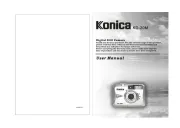
31 Maart 2025
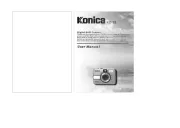
21 Maart 2025
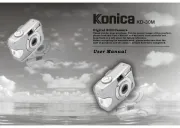
21 Maart 2025
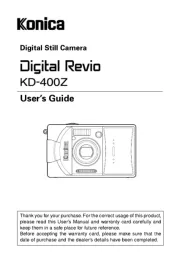
12 Maart 2025
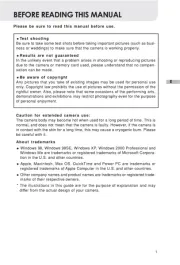
12 Maart 2025
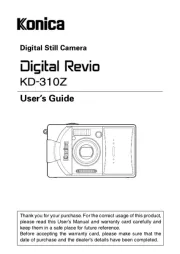
12 Maart 2025
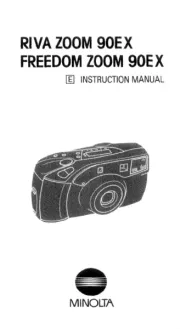
2 December 2024
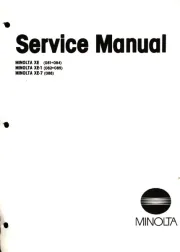
2 December 2024
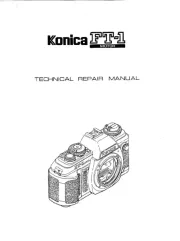
2 December 2024
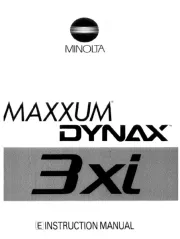
2 December 2024
Handleiding Niet gecategoriseerd
- FireKing
- Avanti
- Fanatec
- Cane Creek
- Planet Audio
- Feitian
- Caple
- Koolatron
- Insignia
- Ruark Audio
- EZ Dupe
- Octavio
- Spypoint
- Simeo
- GlobalTronics
Nieuwste handleidingen voor Niet gecategoriseerd
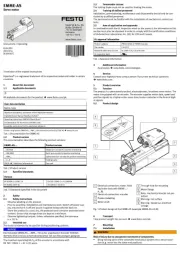
1 Augustus 2025
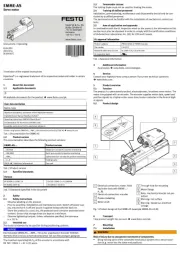
1 Augustus 2025
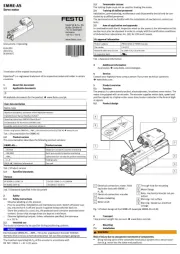
1 Augustus 2025
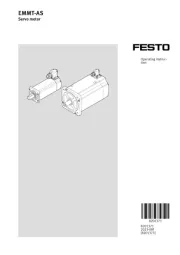
1 Augustus 2025
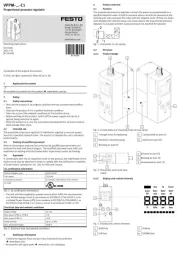
1 Augustus 2025
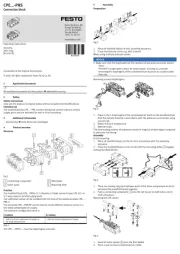
1 Augustus 2025
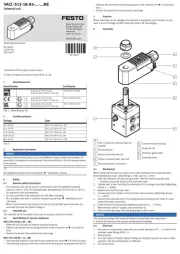
1 Augustus 2025
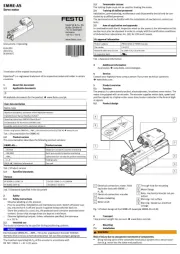
1 Augustus 2025
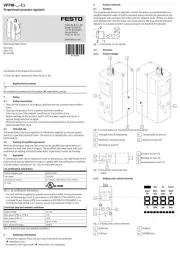
1 Augustus 2025
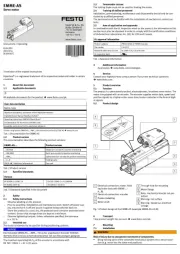
1 Augustus 2025